About MyIdentity
MyIdentity is a microservice application provided by EmpowerID and hosted in Azure. It enables users to manage their organizational identity information while giving administrators centralized control to configure access and enforce governance policies.
Designed as a secure, self-service platform, MyIdentity empowers users to:
- Update profile information
- Manage email notification preferences
- Set out-of-office statuses
- Delegate approvals
All functionality is governed by role-based access controls and audit logging to ensure compliance and transparency.
Core Purpose
MyIdentity bridges the gap between user autonomy and organizational control. It provides a secure, role-sensitive interface for identity self-management while enforcing administrative boundaries.
Key Features
- Profile Management – View and edit personal and organizational profile attributes
- Approval Delegations – Delegate approval responsibilities to alternate approvers
- Notification Preferences – Customize notification delivery and formats
- Out-of-Office Management – Set Exchange Online out-of-office status directly from the UI
MyIdentity supports efficient identity lifecycle management by aligning user empowerment with security and compliance requirements.
Understanding the User Interface
The MyIdentity interface dynamically adapts based on the user's role and permissions, displaying only the authorized components.
Default Landing Page
The landing page displays role-relevant widgets and navigation options.
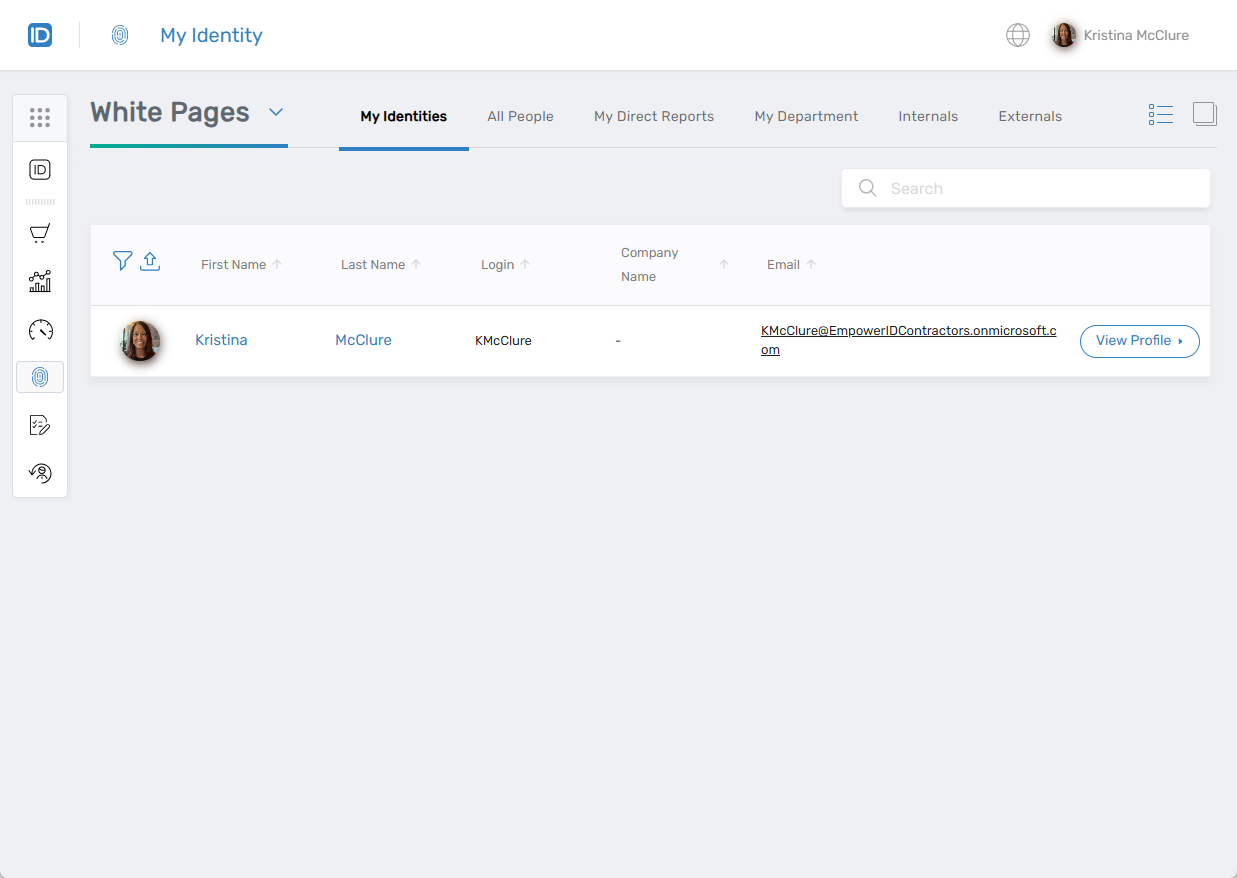
Main Navigation
Users access features through the Page dropdown, which lists all enabled and accessible components.
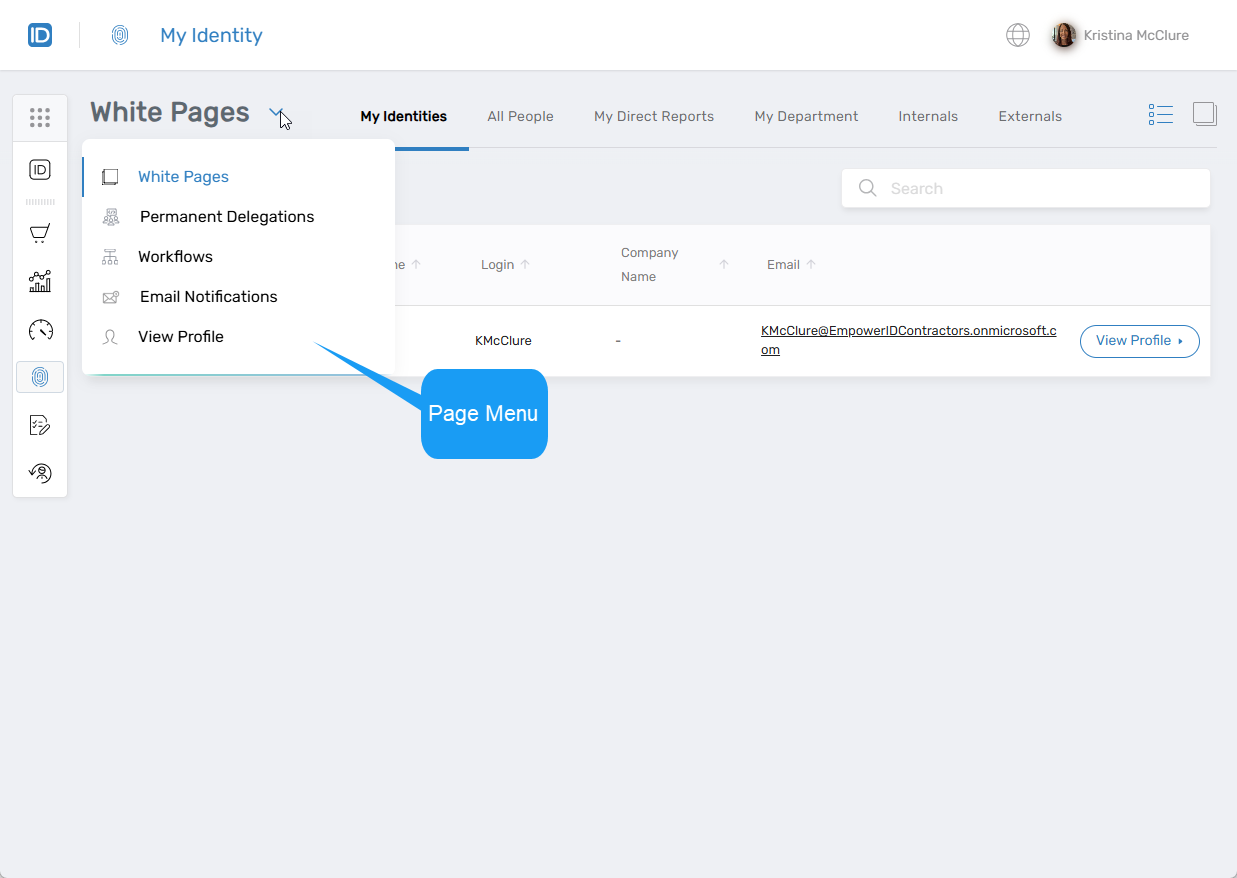
🔒 Visibility of pages and features is controlled through administrative configuration and access levels.
Functional Components
White Pages Directory
The White Pages provides a directory view with the following tabs:
- My Identities – All identities linked to the current user
- All People – Searchable org-wide directory (configurable for privacy)
- My Direct Reports – Org chart of team members under the user’s management
- My Department – Departmental members
- Internals / Externals – Segregated views for internal employees vs. external users or partners
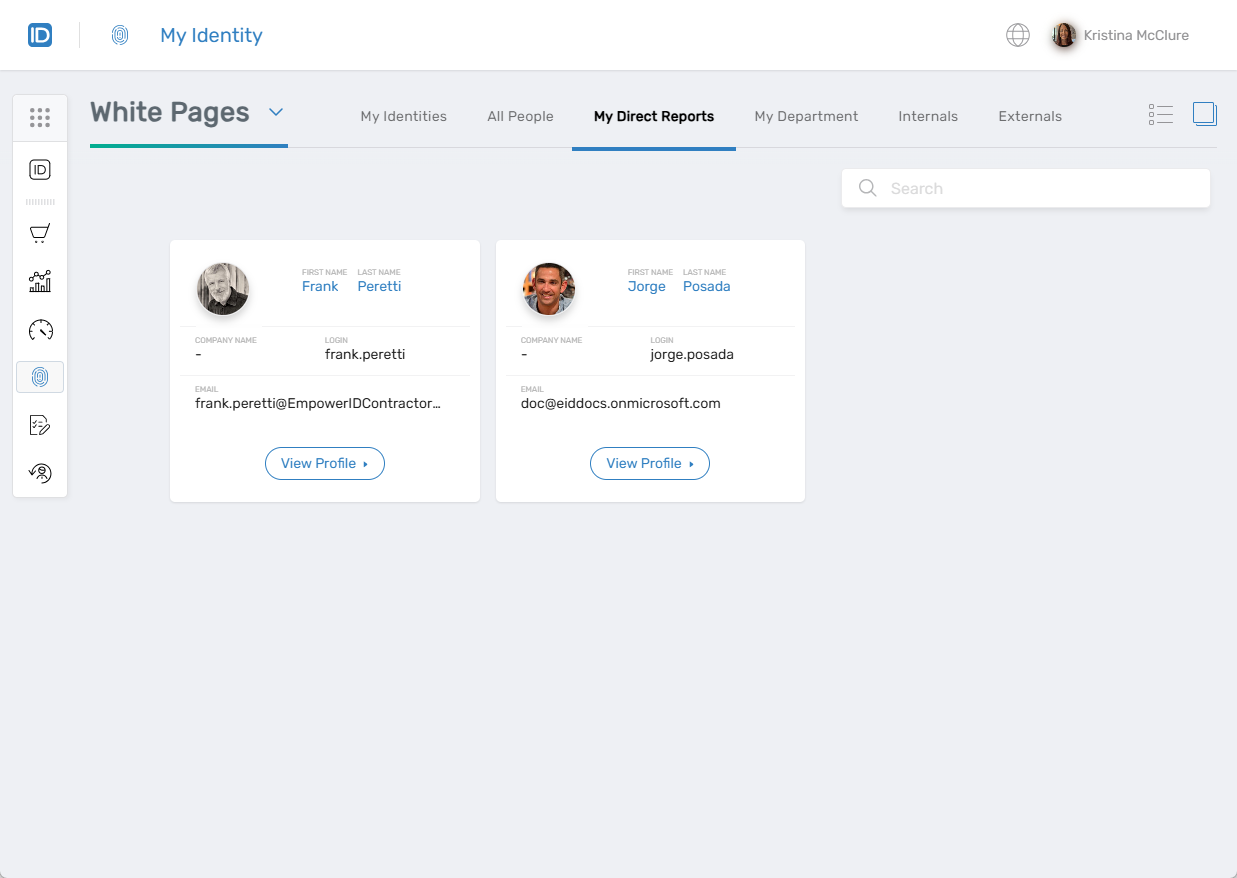
Permanent Delegations
The Permanent Delegations page allows users to:
- Create approval delegations to trusted delegates
- View outgoing (assigned) and incoming (received) delegations
- Edit or revoke delegations
All delegation actions are recorded in the audit log.
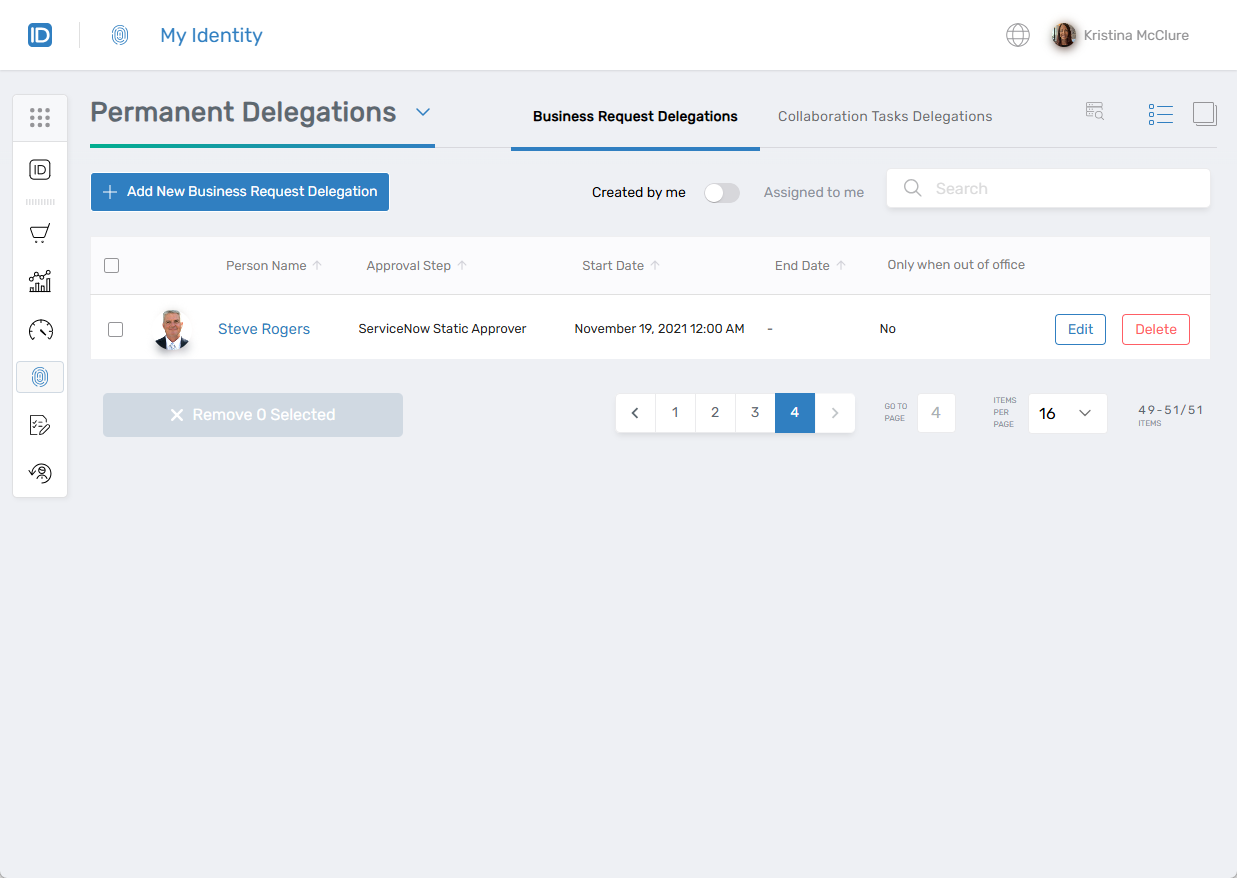
Notifications and Workflows
Users manage communication preferences and access authorized workflows:
- Workflows – Launch EmpowerID workflows directly from the app
- Notifications – Customize digest and transactional notification preferences
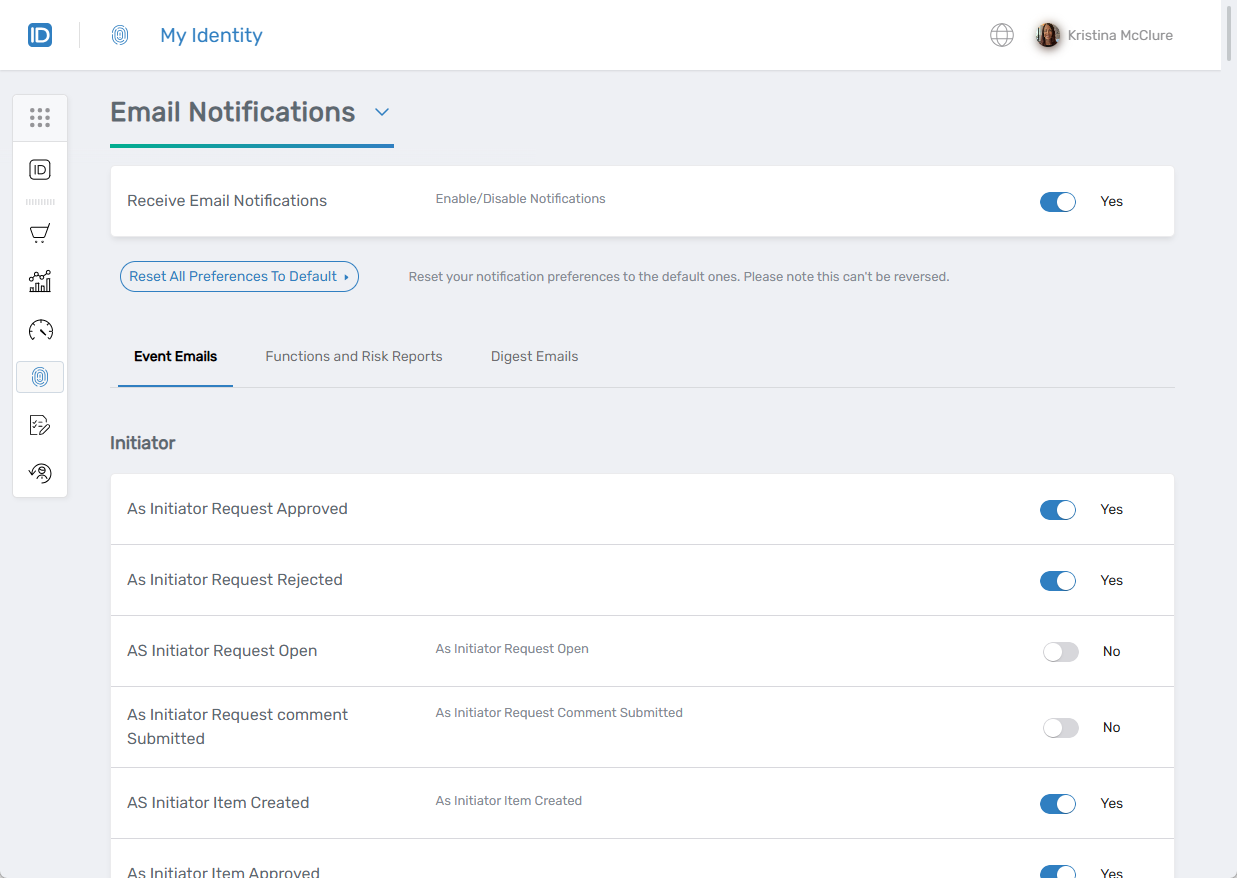
View Profile & Manage Identity
The View Profile page presents organizational and contact information. Users can launch the Manage Your Identity workflow to make changes, such as updating the out-of-office status.
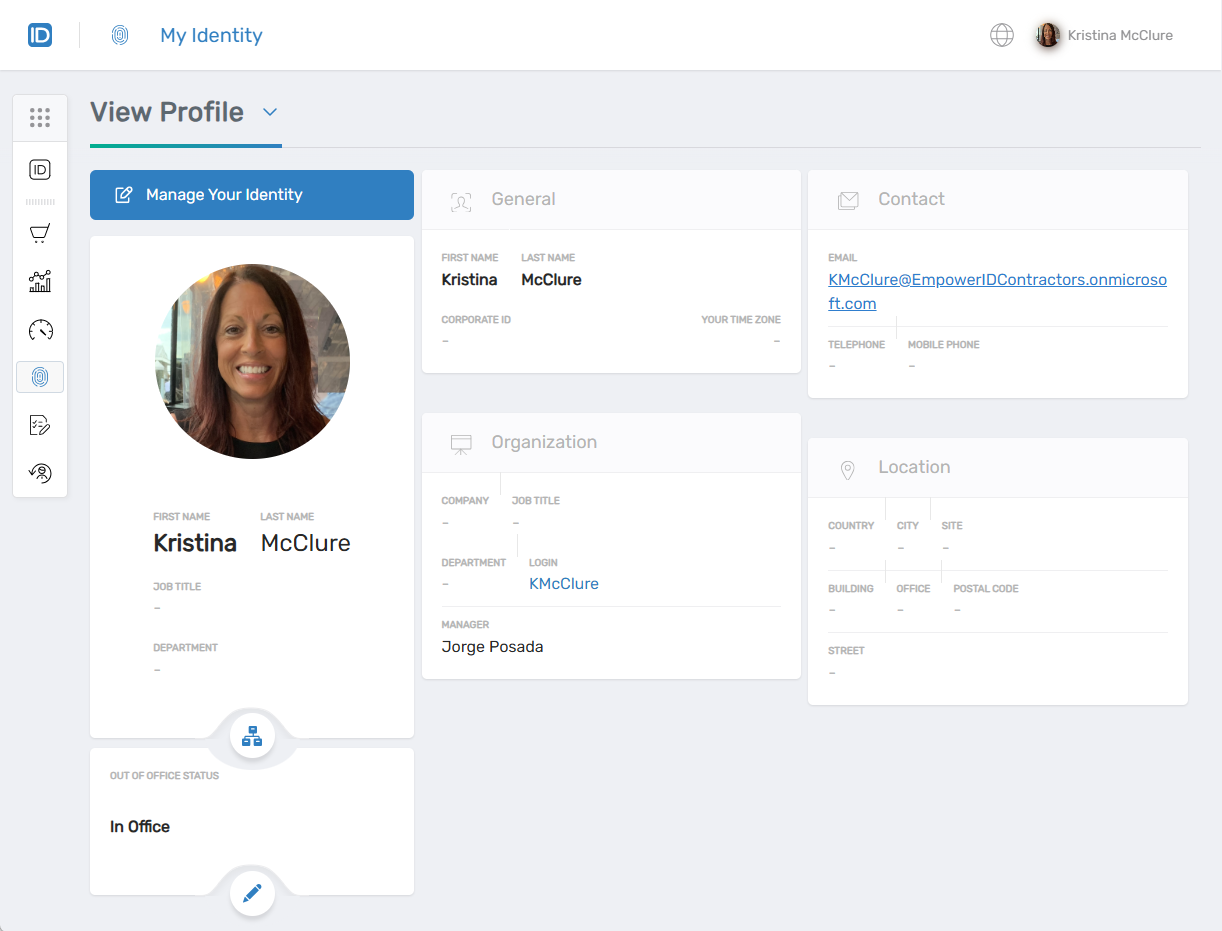
Administrative Configuration
Administrators govern MyIdentity by managing component access, interface customizations, and backend configurations. Its microservice-based architecture enables granular control of modules such as pages, widgets, and API integrations.
Access Level Management
Administrators assign Access Levels to users and groups to control feature visibility. For example:
| Access Level | Description |
|---|---|
| Full Access | Intended for managers or administrators (e.g., White Pages, Approval Delegations) |
| Limited Access | Intended for general users (e.g., Profile updates, Notifications only) |
Subcomponent Control
Each module can be independently enabled or disabled per role or user.
Examples:
- Restrict external user visibility to HR teams only
- Enable approval delegation management for department managers
Compliance and Security
- All user actions (e.g., delegations, edits) are auditable
- Role-based access ensures data exposure is appropriate
- Microservice isolation improves security posture
- User data updates are governed by organizational policies